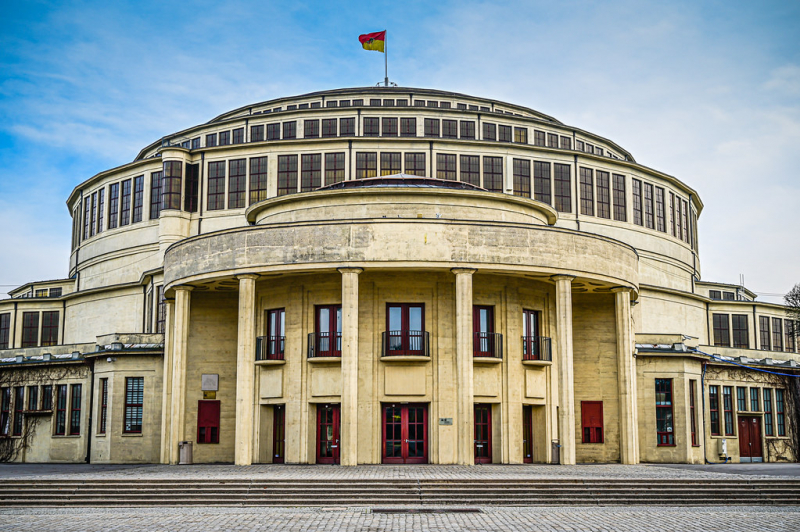The Centennial Hall
The Centennial Hall, formerly known as Hala Ludowa ("People's Hall"), is a historic structure in Wroclaw, Poland. It was built in 1911–1913, under the German Empire, based on the plans of architect Max Berg. Centennial Hall was built by Max Berg to be a versatile facility that could host exhibitions, concerts, dramatic and opera performances, and sporting events. The hall is still utilized for sporting events, corporate meetings, and concerts.
With an inner circle of 69 m (226 ft) and a height of 42 m (138 ft), the cupola styled after Centennial Hall was the largest edifice of its kind at the time of construction. The 7,000-person capacity is accommodated by the symmetrical quatrefoil design with a wide circular middle space. The dome is 23 meters (75 feet) tall and built of steel and glass.
In the twentieth century, the Jahrhunderthalle became an important reference for the development of reinforced concrete structures. A superior dome with a lantern is located in the structure's center. From the inside, there is an obvious pattern of the Iron Cross at the top of the dome; as a result, the center of the structure was shrouded during Poland's Communist era.
As an early example of reinforced concrete construction, the Centennial Hall was recognized as one of Poland's official national Historic Monuments on April 20, 2005, along with the Four Domes Pavilion, the Pergola, and the Iglica. The National Heritage Board of Poland maintains its listing. In 2006, it was also designated as a UNESCO World Heritage Site.
Location: Wrocław, Lower Silesia, Poland











